
In this week’s Claire Chats, I talk about the medieval and Tudor traditions associated with Good Friday, the feast day commemorating Christ’s crucifixion.
[Read More...]
In this week’s Claire Chats, I talk about the medieval and Tudor traditions associated with Good Friday, the feast day commemorating Christ’s crucifixion.
[Read More...]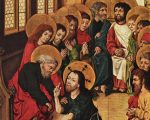
Maundy Thursday commemorates the Last Supper, that final meal that Jesus Christ had with his disciples before his arrest.
In Tudor times, on Maundy Thursday, the church was prepared for Easter with water and wine being used to wash the altars and it was traditional for people to go to confession. The three holy oils – the chrism oil, the oil of catechumens and the oil of the sick – were also blessed on this day.
[Read More...]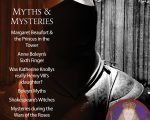
Here is the full version of our 76-page April edition of Tudor Life Magazine. This month we have articles about some of the strange and bizarre myths and mysteries surrounding the Tudors.
[Read More...]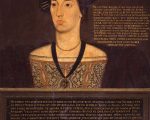
Sir Anthony Browne was born in c.1500 and was the son of Sir Anthony Browne and his wife Lucy. Browne’s father was a member of the Browne family of Betchworth, in Surrey, and his mother was a widow of Sir Thomas Fitzwilliam of Aldwark, Yorkshire. She was also the daughter and coheir of John Neville, 1st Marquess of Montagu and son of Richard Neville, 5th Earl of Salisbury. Browne’s great uncle was Richard Neville, Earl of Warwick, the famous “Kingmaker”. From his mother’s first marriage, Browne had a half-brother, William Fitzwilliam, 1st Earl of Southampton, whose later career resembled his in many ways.
[Read More...]
26th March:
1533 – Convocation was asked to pronounce on the validity of a papal dispensation allowing a man to marry his brother’s widow, the man and widow in question being Henry VIII and Catherine of Aragon.
1546 – Death of Sir Thomas Elyot, humanist scholar and diplomat. He was buried at Carleton Parish Church in Cambridgeshire. Elyot’s offices included Clerk of the Privy Council, High Sheriff of Oxfordshire and Berkshire, High Sheriff of Cambridgeshire and Huntingdonshire, and a commissioner in the inquiry into the monasteries before their dissolution. He also acted as a diplomat, visiting the court of Charles V in 1531, and was one of the men chosen to receive Anne of Cleves in 1540. Elyot’s works include the 1531 treatise “The Boke named the Governour”, the 1536 medical treatise “The Castell of Helth”, his 1538 “Latin Dictionary” and a number of translations.
1556 – Matthew Parker, Archbishop of Canterbury, and Edmund Grindal, Bishop of London, summoned one hundred and ten ministers to Lambeth Palace to get them to pledge their willingness to wear vestments, as worn by the man in front of them: Robert Cole, a former non-conformist who now complied. The outfit consisted of a square cap, gown, tippet, and surplice. They were also asked “to inviolably observe the rubric of the Book of Common Prayer, and the queen’s majesty’s injunctions, and the Book of Convocation” and to commit to these orders on the spot, by writing “volo” or “no volo”. 37 refused and were suspended.
1609 – Date of death for John Dee, astrologer, mathematician, alchemist, antiquary, spy, philosopher, geographer and adviser to Elizabeth I, given by John Pontois, a merchant who inherited some of Dee’s books. This date was backed up by Anthony Wood, who told Elias Ashmole that Dee had died at Pontois’ house in Bishopsgate Street. Dee was buried in Mortlake Church. The traditional date for Dee’s death is December 1608.
1618 – Death of John Bridges, Dean of Salisbury in Elizabeth I’s reign and Bishop of Oxford in James I’s reign, at Marsh Baldon, Oxfordshire. He was buried there.
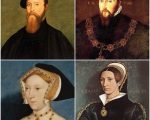
The Seymour family was a very important family in the reigns of Henry VIII and Edward VI, but just how much do you know about them? Grab a coffee and snack, and settle down to test your knowledge with this fun quiz. Good luck!
[Read More...]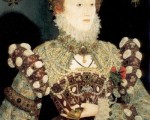
On this day in history, 24th March 1603, Queen Elizabeth I died at Richmond Palace. She was sixty-nine years old and had ruled for over forty-four years.
You can click here to read more about her death, but I thought it would be useful to list some Elizabeth I resources for you here:
[Read More...]
Thank you so much to Tudor Society member Anthony for inspiring today’s Claire Chats talk. Anthony asked if I’d do another of my “bookcase” chats so today I thought I’d focus on my collection of books on the six wives of Henry VIII.
[Read More...]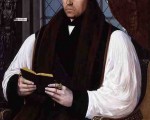
As today is the anniversary of the burning of Thomas Cranmer, former Archbishop of Canterbury, on 21st March 1556 in Oxford, I thought I’d list some resources for you to find out more about this fascinating Tudor man.
[Read More...]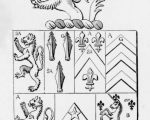
Thank you to Teri Fitgerald for writing this biography of Frances Murfyn, a little know Tudor woman, for us.
Frances Murfyn (c.1519–c.1543) was the daughter of Sir Thomas Murfyn, an alderman and former lord mayor of London, and his second wife Elizabeth Donne, daughter, and heir, of Sir Angel Donne, alderman of London and Anne Hawardine of Cheshire.
Her father died in 1523 and her mother subsequently married Sir Thomas Denys in 1524. Her older sister Mary had married, in 1523, Andrew Judde, a successful merchant and future lord mayor of London. In early 1534, her stepfather successfully negotiated a marriage between Frances and Richard Cromwell (c.1510–1544), the nephew of Thomas Cromwell. The couple were married by 8th March 1534 and they would have two sons: Henry (c.1537–1604) and Francis (c.1541–1598).
[Read More...]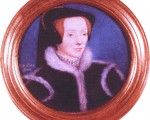
19th March:
1563 – Deaths of Arthur Brooke, translator and poet, and Sir Thomas Finch, knight-marshal, in the shipwreck of the Greyhound, off the coast of Rye in East Sussex.
1563 – Peace (Edict) of Amboise signed at the Château of Amboise by Catherine de’ Medici, as regent for her son, Charles IX. Catherine initiated this truce after the assassination of Francis, Duke of Guise, at the Siege of Orléans. The Edict ended the first phase of the French Wars of Religion and guaranteed the Huguenots religious privileges and freedoms. Peace did not last long, however.
1568 – Death of Elizabeth Seymour, Lady Cromwell. Click here to read more.
1577 – Death of Edmund Harman, former barber of Henry VIII, at Burford in Oxfordshire. He had retired there after Henry VIII’s death. Harman was buried at Taynton Church.
1590 – Baptism of William Bradford, separatist and founder of the Plymouth Colony, Massachusetts, at Austerfield in Yorkshire. Bradford was Governor of the colony for over thirty years.
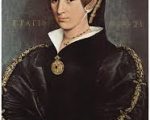
On this day in history, 19th March 1568, Elizabeth Seymour, the wife of John Paulet, Lord St John died. She was laid to rest on 5th April in the Paulet family church of St Mary at Basing, Hampshire.1 She was around fifty years of age.
The undated inscription on the wall of the vault in the church (as transcribed by Lord Bolton, 16th Dec. 1903) reads:
“Hic jacet D[omina] Cromwell, quondam conjux Johis, Marchionis Winton.”2
Known by her superior title of Lady Cromwell, Elizabeth was never a Marchioness – her husband succeeded his father as 2nd Marquess of Winchester after her death.
[Read More...]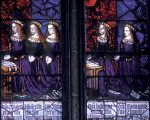
King Edward IV married the Lancastrian widow Elizabeth Wydeville [Woodville] in the spring or summer of 1464. In nineteen years of marriage, Elizabeth gave birth to ten children, seven of whom were daughters. The eldest daughter Elizabeth, born in 1466, remains the most well known in popular and scholarly circles and Edward IV’s other four daughters are significantly neglected both in factual and fictional accounts of their lives. The emphasis on Elizabeth and the neglect of her sisters are perhaps understandable, in that Elizabeth married Henry Tudor in 1485 and gave birth to Henry VIII in 1491. A queen of England undoubtedly attracts more attention than a countess or viscountess. Yet the lives of Elizabeth of York’s younger sisters are interesting in shedding light on the marriage policies of the houses of York and Tudor in an era of intermittent dynastic and political conflict. They also illuminate the contrasting fortunes of members of a side-lined royal dynasty.
[Read More...]
March is a very busy month for “on this day in history” Tudor events, but how much do you know about the births, deaths, marriages, treaties etc. that took place in this month?
Test yourself with this fun crossword and remember, all the answers can be found on this site somewhere!
[Read More...]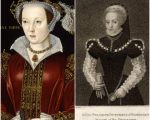
Thank you to Tudor Society member RealTudorLady for asking this question: “I have been reading recently that Anne Seymour, wife of Edward Seymour was jealous of Queen Katherine Parr and that the two women hated each other. This was rumoured to stem from Anne Seymour (Stanhope) demanding precedence over the Dowager Queen as her husband was Lord Protector and although she was not entitled to this she demanded it anyway. She also told her husband to get rid of his brother. Is there any truth to these rumours?”
Historian and author Conor Byrne answered the question…
The suggestion that Anne Seymour, Duchess of Somerset, experienced conflict with the dowager queen, Katherine Parr, in 1547-8 can be dated to rumours circulating in the duchess’s lifetime. It has also long been claimed that Anne encouraged her husband, the Lord Protector, to assent to the execution of his younger brother Thomas Seymour, who was the husband of Katherine Parr.
[Read More...]
In today’s Claire Chats video talk, I look at the changes to the English language that took place in the 15th to 17th century and examine the English that our favourite people, the Tudors, spoke. Was it like ours? How did they sound?
[Read More...]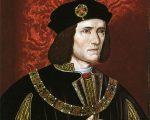
Thank you to William (Bill) for asking this question. His full question was: “Paul Murray Kendall’s book Richard The Third states that there was no chaplain available for services in the King’s army before the Battle of Bosworth. What does this mean? It seems incredible that Catholic soldiers would not hear Mass before going forth to battle.”
I forwarded the question to author and historian Nathen Amin, and in the meantime, I did some digging. I knew that Michael Jones said the same in his book Bosworth and that the information came from “The Crowland Chronicle”. I looked it up and found this bit in the chronicle:
[Read More...]
Just to let you know that our expert speaker for this month, Lauren Browne, will be in the Tudor Society chatroom –
https://www.tudorsociety.com/chatroom/ – at 11pm UK time on Saturday 24th March to answer your questions on her talk on Jane Shore, part 2 of her series looking at rivals and mistresses.
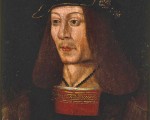
12th March:
1537 – Execution of William Haydock, Cistercian monk. He was hanged for his involvement in the Pilgrimage of Grace. Interestingly, his remains were discovered in the family’s home, Cottam Hall, in the early 19th century because his nephew had saved his body and hidden it there.
1539 – Thomas Boleyn, Earl of Wiltshire and Earl of Ormond, and father of Queen Anne Boleyn, died at Hever Castle, aged around sixty-two. He was laid to rest at St Peter’s Church, Hever.
1564 – Baptism of Christopher Bales, Roman Catholic priest and martyr. Bales was executed by hanging on 4th March 1590 in Fleet Street. Two others, Nicholas Horner and Alexander Blake, were executed at Smithfield and Grays Inn Lane for harbouring him.
1573 (11th or 12th) – Death of Edmund Brydges, 2nd Baron Chandos, soldier, politician, Lord Lieutenant of Gloucestershire and Vice-Admiral of Gloucestershire. He was laid to rest at Sudeley.
1628 – Death of John Bull, composer, musician and organ builder, at Antwerp.
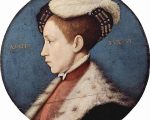
Sundays come round rather quickly, don’t they? I hope you’ve had a lovely weekend so far.
It’s time to grab your favourite beverage and snack, to make yourself comfortable and to get that brain working.
Just how much do you know about King Edward VI? Find out with this quiz!
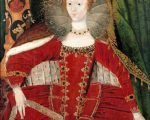
Just to let you know that March’s informal chat will take place in the Tudor Society chatroom on Friday 16th March at 11pm UK time.
The topic of this month’s informal chat is “Elizabeth I – Virgin Queen?”. If you haven’t been to an informal live chat before, let me explain… We all pile into the chatroom at https://www.tudorsociety.com/chatroom/ and share our views on the topic, pose questions to each other, share book recommendations etc. anything to do with the topic. I’m sure this will be a good one!
[Read More...]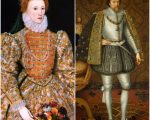
It is well known that when Elizabeth I died on 24 March 1603 at Richmond Palace, she was succeeded on the throne of England by her first cousin twice removed, James VI of Scotland. Although Elizabeth had consented to the execution of James’s mother, Mary, Queen of Scots, in 1587, the mainly cordial relations between the Scottish king and the English queen were undoubtedly influenced by James’s hope that he would eventually be named successor to Elizabeth. The Tudor queen had been notoriously reluctant during her forty-four-year reign to name a successor, but as her life drew to a close Elizabeth realised that the maintenance of peace in her kingdom depended greatly on a stable succession. The peaceful accession of James in the spring of 1603, however, has obscured the dynastic and political relevance of a forgotten noblewoman – Anne Stanley, later Countess of Castlehaven. In the twenty-first century, Anne is generally known not for her dynastic importance but for her testimony against her husband, which led to his execution for sodomy in 1631.
[Read More...]
In this week’s Claire Chats, I continue the series on the development of the English language by looking at the English that was spoken after the Norman conquest up until the 15th century.
[Read More...]
Are you feeling inspired? We wanted to have a little fun and so we’re running a quick competition!
Put on your thinking hat…
We want you to come up with a funny and/or amusing bumper sticker idea for the Tudor Society. All you have to do is come up with a slogan or motto and share it in the comments below. The winner will become the proud owner of that bumper sticker AND win a copy of the amazing book Tudor Places of Great Britain, in paperback.

I am very excited about going back to Kenilworth Castle in September on the Discover the Tudors Tour as it’s been nearly 8 years since I was last there, and it’s a place that is dear to me. I studied at Warwick University, just a few miles from the castle, so I have been many times and it never fails to have an effect on me.
In this talk, I look at the Dudley family’s links to Kenilworth Castle and the preparations for Elizabeth I’s 19-day visit there in 1575. I hope you enjoy it.
[Read More...]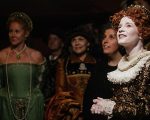
Thank you to Dr Elizabeth Goldring for letting me know about the TV programme Lucy Worsley’s Fireworks for a Tudor Queen which will be broadcast in the UK tomorrow, Wednesday 7th March, at 9pm on BBC4. Elizabeth was involved in the programme and told me that the show attempts to re-create the fireworks display that Robert Dudley, Earl of Leicester, organised for Queen Elizabeth I at Kenilworth Castle in 1575 – how wonderful!
Here’s the trailer for the programme:
[Read More...]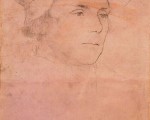
Richard Rich, 1st Baron Rich, we’re led to believe, was born in 1496. The dating of his birth comes from the fact that in 1551 he was said to have been around 54 years of age. He was born in Basingstoke, Hampshire. His father was John Rich, and his mother was Agnes, and it is believed that he may have had ties to the Rich family that was prominent in the Mercers’ Company during the 15th century. The connection came from his father John, for he owned a house in Islington, Middlesex, which he left to his son on his death in 1509.
[Read More...]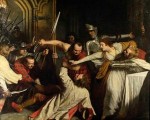
5th March:
1496 – King Henry VII of England issued letters patent to John Cabot (Giovanni Caboto), the Italian navigator and explorer. Click here to read more.
1549 – A bill of attainder was passed against Thomas Seymour, Baron Sudeley, after it was argued that his offences “were in the compasse of treason”. Seymour had been accused of attempting to kidnap his nephew, Edward VI, and also of plotting to marry the teenaged Elizabeth and put her on the throne.
1558 – Smoking tobacco was introduced in Europe by Francisco Fernandes.
1563 – Birth of Sir John Coke, politician and influential administrator during Charles I’s reign.
1572 – Death of Edward Hastings, Baron Hastings of Loughborough, nobleman and soldier. In July 1553, when Lady Jane Grey became queen, he was involved in assembling supporters of Princess Mary in the Thames Valley and became one of Mary’s trusted confidants. In the reign of Elizabeth I he was imprisoned in the Tower for hearing mass, but was released after taking the oath of supremacy.
1575 – Birth and baptism of William Oughtred, the mathematician responsible for developing a straight slide-rule, a gauging rod and various sundials. He also introduced the “×” symbol for multiplication and the abbreviations “sin” and “cos” for the sine and cosine functions.
1618 – Burial of Robert Abbot, Bishop of Salisbury, in Salisbury Cathedral.

The month of March is jam-packed with “on this day” Tudor events, but just how much do you know about the births, deaths and other events of this month? Test yourself with this fun crossword. Good luck!
[Read More...]